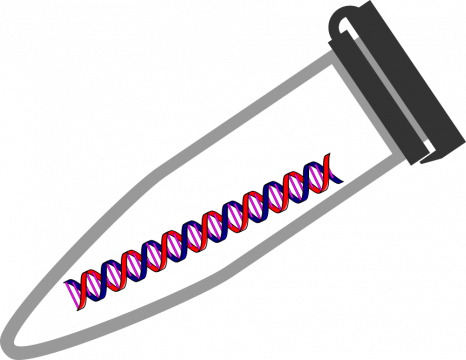How much PCR product can you get?

How much PCR product does one get from a typical PCR reaction? 50-120 ng/µl seems to be a typical result, but it very much depends on your PCR conditions. If you need to minimize your primer concentration to maximize specificity, your yields can be significantly below that. Vice versa, if specificity is not an issue (e.g. for some PCR clonings), you can get many times more.
Let's consider the typical maximum amount of a single PCR reaction, which is 100 µl. And let's assume we do not have specificity issues and therefore we can use large amounts of primer (1 µM each) and dNTPs (0.2 µM). Since the synthesis of every molecule of double-stranded PCR product consumes one primer, the theoretical maximal molar concentration of double-stranded (ds) DNA product is the same as your primer concentration: 1 µM. 1 µM dsDNA would equal 100 pmol for a 100 µl PCR reaction. How much is that in micrograms? That is of course dependent on the length of your PCR product: e.g. 100 pmol dsDNA of 1000 bp is equal to 66 µg.
Can you really get that much? Not in our example of a 1000-bp-product. The reason is that the building blocks of the DNA, the dNTPs, become exhausted long before the primers do. For the 1000 bp product, only 40% of the primers are used up when the dNTPs run out (assuming a GC to AT ratio of 50:50 in your amplicon). To make one molecule of a 1000 bp dsPCR product, you need about 2000 molecules of dNTPs. For our example, a 400-bp PCR product would therefore be optimal as both primers and dNTPs get exhausted at the same rate.
It seems that if you want to get larger amounts of longer PCR products you would need to increase the dNTP concentration. However, in our example of a 1000 bp product, the theoretical maximal amount of PCR product is about 26µg, which is massive and sufficient for most applications. There is an online calculator, that lets you play around with primer and dNTP concentration and product length: http://www.bioline.com/us/media/calculator/01_14.html



